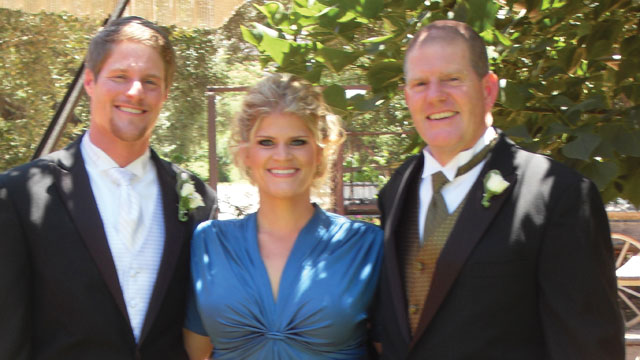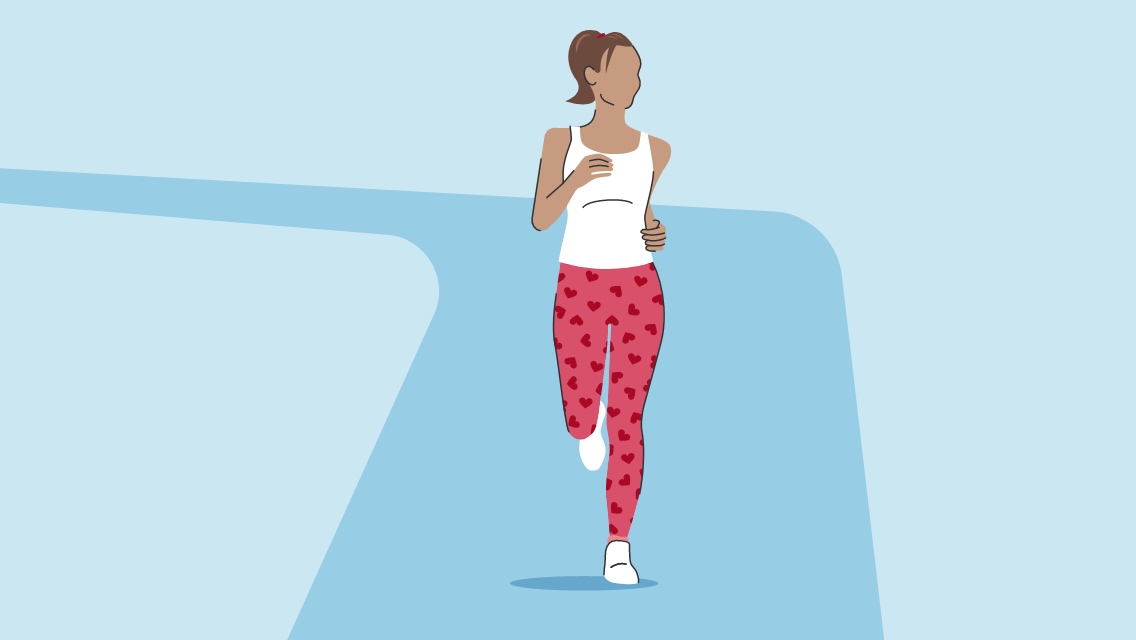Starting a fitness program is one thing. Sticking with it is something else. How often have you gone gung-ho into a regular workout routine only to have your enthusiasm zapped because you don’t feel like you are making any progress?
This kind of discouragement can quickly make you abandon your efforts. And once you’ve been on and off the fitness track a few times, finding the courage to start over again can be daunting.
Our society thrives on instant gratification: If we take the time to do something, we expect immediate results.
However, fitness doesn’t work that way, however. It can take several months or more to see the results you crave.
This doesn’t mean that your health is not improving along the way, of course. In fact, commit to a fitness routine and you’ll begin to condition your body practically from the beginning, even if you don’t “see” its impact as clearly or as quickly as you might like.
One way to get an “inside peek” at the healthy changes occurring within your body is to monitor your heart rate before, during and after your workouts, as well as on rest days. That way you will have tangible proof that you are making progress with every move you make.
Listen to Your Heart
There are different ways to monitor your heart rate during exercise and throughout the day.
Heart rate can be taken via pulse – carotid (throat) or radial (wrist) – for a 6-, 10-, or 15-second count, but this is subject to a high degree of error, especially as the intensity of activity increases.
To guarantee an accurate count, we recommend using a heart-rate monitor. It’s an affordable, easy-to-use device that can play the role of a companion, cheerleader and personal trainer.
The first step is to set up a regular fitness routine that gets your blood pumping, whether it’s walking, running or participating in sports like basketball, tennis or dancing.
If you are just starting out or returning to activity after a long absence, you will want to begin with just 15 minutes of low-intensity activity, three days a week. Increase your time by 10 percent each week until you are comfortable with 60 minutes of activity on most days.
As you play or exercise, there are various ways you can measure your heart rate to see how your body is reacting and your fitness is improving. Here are a few suggestions:
RESTING HEART RATE (RHR):
Get into a habit of taking your RHR when you first wake up in the morning. Active adults average an RHR between 60 and 80 beats per minute. Sedentary individuals can have a resting rate that exceeds 100 beats per minute. Top endurance-trained athletes have reported a RHR of 25 to 40 beats per minute. A low RHR does not necessarily mean greater fitness, but it is relative to your physiology. Individuals just beginning a fitness program will often see a significant drop within the first few weeks.
AMBIENT HEART RATE:
Take your heart rate when you are sitting and relaxed. This is called your ambient heart rate.
Your ambient rate will usually be five to 10 beats higher than your RHR.
As you become fitter, provided other variables are consistent, your ambient heart rate will decline, demonstrating that your cardiovascular system is becoming more efficient. If you’re just beginning an exercise program or increasing your training load, you will usually see a drop in your ambient rate within a few weeks.
TALKING HEART RATE:
Plot out a short 10- to 15-minute course in your neighborhood. Strap on your heart-rate monitor and determine what heart rate you can maintain (walking or jogging) while carrying on a conversation with yourself, your dog or a friend.
Your “talking heart rate” will gradually increase as your endurance improves.
To accurately compare your results, try to keep the variables, such as time of day, food intake, sleep and type of activity fairly consistent. It can be quite motivating to go from being comfortable talking and moving at a heart rate of 135 beats per minute to being comfortable talking and moving at a rate of 142 beats per minute. It’s also encouraging to see that what was once a 15-minute course now only takes 13 minutes.
CONSISTENT PACE ASSESSMENT:
For this, you will need a device that also measures your pace or speed. Some options include a personal electronic gadget (e.g., a speed-and-distance feature or an accelerometer), a speedometer on a bicycle, or a mechanism built into a treadmill or other stationary cardio machine.
Select the type of exercise and pace that you can maintain comfortably for an extended period (30 minutes or more, for example). Perform the activity for 10 minutes at the selected pace and note your average heart rate.
Over time (the course of a few weeks or so), you’ll find that you are able to maintain the same pace at an incrementally lower heart rate.
ONE-MINUTE ACTIVE RECOVERY HEART RATE:
During your regular workout, gradually increase the intensity level until your breathing is labored and talking becomes difficult. Maintain this intensity for two to three minutes. Then note your heart rate.
Reduce the intensity to an extremely slow pace until there is no muscle tension and then record your heart rate after one minute. The more the count drops, the greater your fitness.
The average one-minute recovery rate for adults is 20 to 35 beats per minute. A drop of 45 beats in one minute is an indication of excellent cardio fitness. (Note: If you observe a one-minute recovery heart rate of 13 beats or less in a minute, consult your doctor.)
Get to know your one-minute recovery heart rate in a variety of situations. For instance, it is normal for a recovery heart rate to be greater at the 15-minute mark of a workout (e.g., 30-beat drop) compared with after 50 minutes of a hard workout (e.g., 25-beat drop) when fatigue may have set in.
CALORIC COUNT:
Many heart-rate monitors and a lot of exercise equipment include a caloric-count-expenditure estimate that can be recalled during or after a workout. Use this information to measure your workload (i.e., how much stress you placed on your body). As you become fitter, you will be able to increase your weekly training load. For example, you may begin at a weekly workload of 800 calories and over the course of a few months progress to a workload caloric expenditure of 1,500 to 2,000 per week. (Top athletes, in comparison, expend an average of 5,000 to 6,000 calories per week during intense physical training.)
Be sure to progress gradually with no more than a 10 percent increase weekly. Note that this caloric count doesn’t indicate how many calories you have actually expended, but rather represents an average. For example, if you just finished a workout and your heart-rate monitor indicated that you had a workload of 470 calories, your actual number of calories burned could be anywhere from 330 to 800 calories. Still, you can be confident that a workout of 470 calories has placed twice as much stress on the body as a workout of 235. (Managing your weight isn’t just about the number of calories you eat. See “5 Health Strategies that Are More Important Than Counting Calories“.)
Moving Target
When comparing your day-to-day or week-to-week heart-rate data, be aware that the rate is affected by many variables, such as medications, stress, sleep, physical movement, temperature, dehydration, time of day, altitude, humidity, illness and food intake.
Also, don’t despair if you observe that your numbers seem to be moving in the wrong direction. Take some time to reflect and try to figure out why. Perhaps you have been operating on only four hours of sleep, your job is particularly stressful, or new medications are affecting your heart rate.
Whatever the case, by measuring and monitoring your fitness progress on a regular basis, you will be better able to recognize your small successes and stay the course for a long and rewarding journey.
This article originally appeared as “A Measure of Success” in the October 2004 issue of Experience Life.



This Post Has 0 Comments